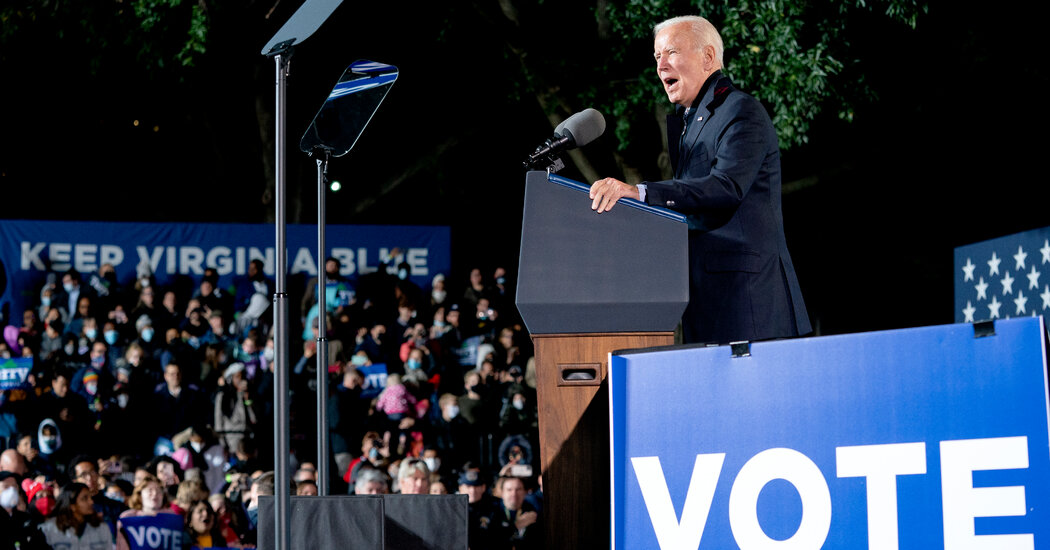
But Representative Sean Patrick Maloney, the chairman of the Democratic Congressional Campaign Committee, was not second-guessing it.
“Glenn Youngkin got away with being all things to all people, and we can’t let them do that,” Mr. Maloney said, adding: “The House Republicans have cast their lot with the toxic Trump agenda of lying about the election, of minimizing the pandemic, of ignoring the attack on the Capitol.”
While more unexpected, the Democratic defeats on Tuesday were not as overwhelming as the last time the party controlled the presidency and Congress, in 2009, when Republicans won the Virginia governorship by 17 percentage points and the New Jersey governorship as well. Deepening polarization has entrenched Democrats in some suburban jurisdictions, such as Virginia’s Fairfax County, which Mr. McAuliffe carried by 30 percentage points in his comeback bid.
These suburban voters, who remain disdainful of Mr. Trump, may not be reachable for Republicans next year. There are, however, two sides to the country’s growing polarization, and the sweeping losses that Democrats suffered in rural Virginia and in New Jersey demonstrated that they were at grave risk of losing even more states and districts next year with sparse populations.
What gives Democrats some optimism is the idea that, while their candidates this year were running against an unsightly backdrop of intraparty legislative wrangling, there will be major accomplishments to trumpet next year.
“When we’re talking process, we’re losing, but once the process is done, we’re going to have lots to say about what we’re doing for real people,” John Anzalone, Mr. Biden’s pollster, said.
Of course, by the 2010 midterms, Democrats had the opportunity to promote the Affordable Care Act and still suffered sweeping losses — in part because they were not seen as sufficiently focused on reviving the post-recession economy.




